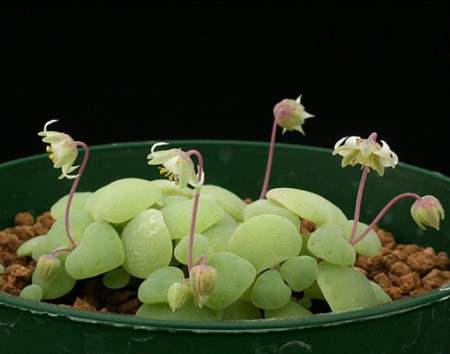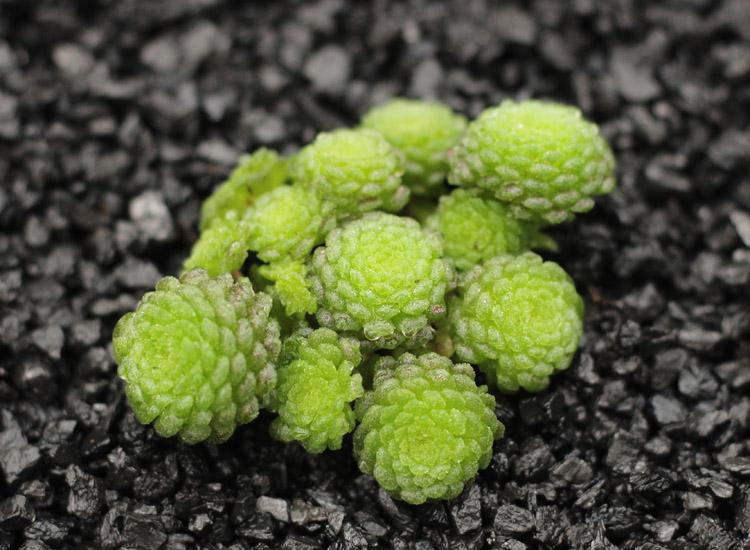What kinds of hanging orchids do you have? how to maintain them?
Hanging orchid (scientific name: Chlorophytum comosum (Thunb.) Baker.), also known as: hanging pot grass, hanging orchid, fishing orchid, bluegrass, folding crane orchid, Western Europe, also known as spider grass or aircraft grass, originated in South Africa.
Monocotyledon class, asparagus, Cymbidium perennial evergreen herbs, rhizome symbiotic or oblique, with most thick roots. Leaves clump, linear, slender leaves, like orchids. Sometimes there are green or yellow stripes in the middle. The flowering stem is drawn from the foliage and grows into a stolon with clusters of leaves at the tip, flowers white, often 2-4 clustered, arranged in open racemes or panicles with purple petals occasionally inside; capsule trigonous-oblate, ca. 5 mm long, ca. 8 mm wide, with 3-5 seeds per locule. Flowering in May and fruiting in August. The plant has the effect of purifying air, and the whole plant can be used as medicine.
Growth habits of Cymbidium

Hanging orchids like warm, moist, semi-overcast environment. It is adaptable, drought-resistant, but not cold-resistant, and does not require harsh soil. It grows better in well-drained, loose and fertile sandy soil. The requirement of light is not strict, so it is suitable to grow under medium light conditions and can withstand weak light. The suitable temperature for growth is 1525 degrees Celsius and the overwintering temperature is 0 degrees Celsius.
The root system of Cymbidium is quite well developed, and the flowerpot should be changed in time after breeding for a period of time, so as to avoid root accumulation, resulting in yellow leaves, wilting and other phenomena.
What are the varieties of hanging orchids?
1. Phnom Penh hanging orchid, leaf edge golden yellow.
2. Golden orchid, with yellow longitudinal stripes in the center of the leaf.
3. Silver-edged orchid, the leaf edge is white.
4. Magnolia lanceolata, there are silver-white longitudinal stripes around the main vein of the leaf.
5. the broad-leaf orchid, the leaf blade is broadly linear, entire or slightly wrinkled. Scape is extracted from the leaves and forms a creeping stem after flowering, which can take root and sprout and grow into a new plant in spring and summer. Capsule triangular-angled-oblate.
6, the middle spot hanging orchid, the leaf is narrow and long, lanceolate, milky white with green stripes and edges.
7. Opaline orchid, the main vein of the leaf has a white longitudinal pattern.
8. Purple orchid, the main vein of leaf is purple.
9. Green orchid, the main vein of the leaf is green.
What conditions do you need to cultivate hanging orchids?
The main results are as follows: 1. The adaptation of substrates and orchids to all kinds of soils is strong, and the cultivation is easy.
2. Watering, the hanging orchid likes the humid environment, and the basin soil is easy to keep wet. However, the hanging fleshy root can store a lot of water, so it has a strong ability to resist drought, and it will not dry to death without watering for several days. Below 5 degrees Celsius in winter, less watering, basin soil should not be too wet, otherwise the leaves are easy to yellowing.
3. Fertilize and apply liquid fertilizer once every two weeks in the growing season. Flower and leaf varieties should apply less nitrogen fertilizer, otherwise the white or yellow markings on the leaves will become less obvious and stop fertilizing when the ambient temperature is below 4 degrees Celsius.
4. Light, hanging orchid prefer semi-overcast environment, can be cultivated in bright indoor all the year round. Cymbidium cultivated outdoors can also grow well in strong direct sunlight in summer. However, hanging orchids cultivated indoors should avoid strong direct sunlight and cover 50% to 70% of the sun.
5. Temperature, the hanging orchid is resistant to high temperature. The suitable temperature is above 15 degrees Celsius, and the winter overwintering temperature is above 4 degrees Celsius.
6, humidity, like the humid environment, in order to make the orchid fresh and fresh green, you can often spray water to the leaves.
7. Prune and cut off the yellow leaves at any time. The basin can be turned once a year in March to cut off the old root, rotten root and excess fibrous root. Cutting off the old leaves of Cymbidium in the first and middle of May will promote the germination of more new leaves and small Cymbidium.
Time: 2019-04-22 Click:
- Prev

How to raise tulips? besides gardening, can you plant tulips?
Tulip (scientific name: TulipagesnerianaL.) is a perennial herb of the genus Tulip of Liliaceae, with bulbs. The English name is "Gardentulip" or "Didierstulip". Tulips are widely believed to be native to Turkey.
- Next

The breeding methods of longevity flowers mean good-good reproduction!
Christmas cabbage (scientific name: KalanchoeblossfeldianaPoelln.): also known as "longevity flower". Perennial fleshy herbs. The plant height is 10-30 cm. The stem is erect. Leaves simple opposite, elliptic, margin obtusely dentate. Cymes; florets orange to crimson.
Related
- Fuxing push coffee new agricultural production and marketing class: lack of small-scale processing plants
- Jujube rice field leisure farm deep ploughing Yilan for five years to create a space for organic food and play
- Nongyu Farm-A trial of organic papaya for brave women with advanced technology
- Four points for attention in the prevention and control of diseases and insect pests of edible fungi
- How to add nutrient solution to Edible Fungi
- Is there any good way to control edible fungus mites?
- Open Inoculation Technology of Edible Fungi
- Is there any clever way to use fertilizer for edible fungus in winter?
- What agents are used to kill the pathogens of edible fungi in the mushroom shed?
- Rapid drying of Edible Fungi

